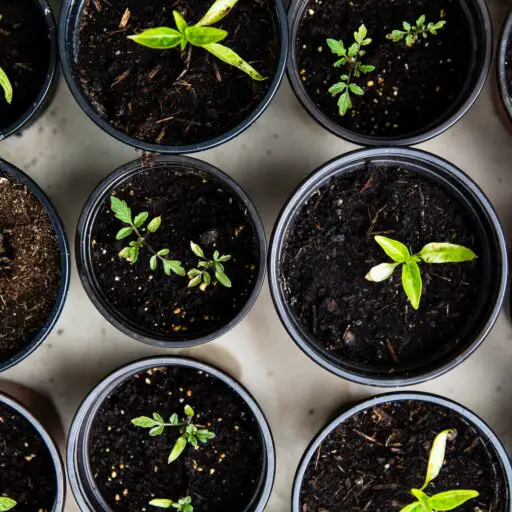Support our educational content for free when you purchase through links on our site. Learn more
Have you ever strolled past a community garden and wondered about the magic happening within those lush green spaces? 🌱 Community gardens are more than just patches of soil and plants; they are thriving ecosystems that foster social connections, promote sustainability, and enhance well-being. In fact, studies show that neighborhoods with community gardens experience a 30% increase in community engagement! Imagine transforming a vacant lot into a vibrant hub of activity, where friendships bloom alongside tomatoes and zucchinis.
In this comprehensive guide, we’ll explore the 14 remarkable effects of community gardens that go beyond the obvious benefits of fresh produce. From boosting mental health to creating economic opportunities, you’ll discover how these green spaces are reshaping our communities for the better. Plus, we’ll share inspiring success stories and tips on how you can get involved. Ready to dig in? Let’s uncover the hidden treasures of community gardening!
Key Takeaways
- Social Connections: Community gardens foster friendships and collaboration among diverse groups.
- Health Benefits: Access to fresh produce improves nutrition and mental well-being.
- Environmental Impact: These gardens enhance air quality and promote local biodiversity.
- Economic Advantages: Community gardens can lower food costs and increase property values.
- Educational Opportunities: They serve as living classrooms, teaching sustainable practices.
Want to get started on your gardening journey? 👉 Shop for essential gardening tools here and explore organic seeds here to create your very own community garden! 🌼
Table of Contents
- Quick Tips and Facts about Community Gardens 🌱
- The Rich History of Community Gardens: A Growing Legacy 🌍
- The Social Benefits of Community Gardens: Building Community Connections 🤝
- Environmental Effects of Community Gardens: Greening Urban Spaces 🍃
- Health Impacts of Community Gardens: Growing Wellness 🌿
- Economic Benefits of Community Gardens: Cultivating Local Economies 💰
- Educational Opportunities in Community Gardens: Learning Through Gardening 📚
- Psychological Benefits of Community Gardening: Nurturing Mental Health 🧠
- Challenges Faced by Community Gardens: Overcoming Hurdles 🚧
- Success Stories: Inspiring Community Garden Projects 🌟
- Conclusion: The Lasting Impact of Community Gardens 🌼
- Recommended Links for Further Reading 📖
- FAQ: Your Community Garden Questions Answered ❓
- Reference Links: Sources and Further Information 🔗
Quick Tips and Facts about Community Gardens 🌱
Welcome to the green revolution! Community gardens are transforming urban landscapes one plot at a time. Here are some quick tips and facts to get you started:
- Community Gardens Reduce Waste: These gardens are champions of sustainability, helping to reduce waste and promote recycling. Curious about how they do it? Check out our article on How Do Community Gardens Reduce Waste? 10 Surprising Benefits You Need to Know 2024 🌱.
- Grow Your Own: Community gardens allow you to grow organic produce, cutting down on your grocery bill and reducing your carbon footprint.
- Social Hub: They’re not just about plants! These gardens are social spaces where friendships bloom. 🌺
- Health Benefits: From boosting mental health to providing physical exercise, community gardens are a holistic health package.
- Environmental Impact: They improve air quality and promote biodiversity. 🌍
Want more? Let’s dig deeper into the roots of community gardens.
The Rich History of Community Gardens: A Growing Legacy 🌍

Community gardening has a storied past, from the Victory Gardens of World War II to today’s urban green spaces. These gardens have been a beacon of resilience and community spirit.
The Evolution of Community Gardens
- Victory Gardens: During the World Wars, these gardens were vital for food security.
- Urban Renewal: In the 1970s, community gardens began revitalizing neglected urban areas.
- Modern Movement: Today, they are crucial for sustainability and community building.
For more on how community gardens benefit society, visit our Benefits of Community Gardens page.
The Social Benefits of Community Gardens: Building Community Connections 🤝
Community gardens are the ultimate social glue, bringing together people from all walks of life. Here’s how they foster community spirit:
Social Inclusion and Diversity
- Cultural Exchange: Gardens are melting pots of cultures, promoting understanding and cooperation.
- Intergenerational Bonds: They provide a space for young and old to connect and learn from each other.
Community Building
- Shared Goals: Working towards a common goal strengthens community ties.
- Events and Workshops: Gardens often host events that engage the wider community. Check out upcoming Community Garden Events.
Environmental Effects of Community Gardens: Greening Urban Spaces 🍃
Community gardens are unsung environmental heroes. Here’s how they contribute to a healthier planet:
Air and Soil Quality
- Air Purification: Gardens help reduce air pollution by absorbing CO2.
- Soil Health: They improve soil quality through composting and organic practices.
Biodiversity and Sustainability
- Habitat Creation: Gardens provide habitats for pollinators and other wildlife.
- Sustainable Practices: They promote eco-friendly gardening techniques, reducing reliance on pesticides.
Explore more about sustainable gardening in our Community Garden Policies section.
Health Impacts of Community Gardens: Growing Wellness 🌿
Gardening isn’t just good for the planet—it’s great for you too! Let’s dig into the health benefits:
Physical Health
- Exercise: Gardening is a full-body workout that improves strength and flexibility.
- Nutrition: Access to fresh produce improves dietary habits.
Mental Health
- Stress Reduction: Spending time in nature reduces stress and boosts mood.
- Sense of Purpose: Tending to a garden provides a rewarding sense of accomplishment.
For tips on starting your gardening journey, visit Gardening for Beginners.
Economic Benefits of Community Gardens: Cultivating Local Economies 💰
Community gardens aren’t just pretty—they’re economically savvy too. Here’s how they boost local economies:
Cost Savings and Financial Independence
- Reduced Food Costs: Growing your own food slashes grocery bills.
- Job Creation: Gardens can create jobs in urban agriculture and landscaping.
Property Value and Community Investment
- Increased Property Values: Proximity to green spaces can enhance property values.
- Community Investment: Gardens attract investment and development in neglected areas.
To learn more about designing a community garden, visit our Garden Design Ideas.
Educational Opportunities in Community Gardens: Learning Through Gardening 📚
Community gardens are living classrooms, providing endless learning opportunities:
Hands-On Learning
- Gardening Skills: From planting to harvesting, gardens teach valuable skills.
- Environmental Education: They offer lessons in sustainability and ecology.
Workshops and Programs
- Skill-Building Workshops: Gardens often host workshops on topics like composting and permaculture.
- School Programs: Many gardens partner with schools to provide educational programs.
Psychological Benefits of Community Gardening: Nurturing Mental Health 🧠
Gardening is a therapy like no other. Here’s how it nurtures mental health:
Stress and Anxiety Reduction
- Nature Therapy: Being surrounded by nature is a natural stress reliever.
- Mindfulness: Gardening encourages mindfulness and focus.
Community Support
- Social Interaction: The social aspect of community gardening provides emotional support.
- Sense of Belonging: Being part of a community garden fosters a sense of belonging and purpose.
Challenges Faced by Community Gardens: Overcoming Hurdles 🚧
Even gardens have their thorns. Here are some common challenges and how to overcome them:
Land and Resources
- Space Limitations: Finding available land in urban areas can be difficult.
- Resource Access: Securing water and soil can be a challenge.
Community Engagement
- Volunteer Retention: Keeping volunteers engaged and motivated is crucial.
- Conflict Resolution: Managing diverse personalities and opinions requires diplomacy.
Success Stories: Inspiring Community Garden Projects 🌟
Let’s end on a high note with some inspiring success stories from community gardens:
Green Thumbs United
- The Garden of Hope: Once a vacant lot, now a thriving community hub that offers workshops and fresh produce to local residents.
- Urban Oasis: A garden in the heart of the city that has become a model for sustainable urban agriculture.
These stories show the transformative power of community gardens. Want to start your own success story? Get inspired by visiting our Community Garden Events.
Stay tuned for our Conclusion section, where we’ll wrap up the many effects of community gardens and offer final thoughts and recommendations. 🌼
Conclusion: The Lasting Impact of Community Gardens 🌼

Community gardens are not just patches of green in urban jungles; they are vibrant ecosystems that foster community spirit, health, and sustainability. From promoting social connections to enhancing mental well-being and improving the environment, the effects of community gardens are profound and far-reaching.
Summary of Positives and Negatives
Positives:
- Social Cohesion: They unite people from diverse backgrounds, fostering friendships and collaboration.
- Health Benefits: Access to fresh produce improves dietary habits and mental health.
- Environmental Impact: They enhance air quality, promote biodiversity, and reduce waste.
- Economic Advantages: Community gardens can lower food costs and increase property values.
Negatives:
- Resource Limitations: Challenges in securing land and resources can hinder development.
- Volunteer Engagement: Maintaining interest and participation can be difficult.
- Conflict Management: Diverse opinions may lead to disagreements among participants.
In summary, the benefits of community gardens far outweigh the challenges. If you’re considering starting or joining one, we wholeheartedly recommend diving in! 🌱 They not only help you grow food but also nurture connections and foster a sense of belonging.
Recommended Links for Further Reading 📖
-
Books on Community Gardening:
- “The Community Garden Handbook”: Shop on Amazon
- “Food Not Lawns: How to Turn Your Yard into a Garden”: Shop on Amazon
-
Gardening Tools and Supplies:
- Gardening Tools: Shop Gardening Tools on Amazon
- Organic Seeds: Shop Organic Seeds on Amazon
FAQ: Your Community Garden Questions Answered ❓

What are the positive effects of community gardens?
Community gardens provide numerous positive effects, including:
- Enhanced Food Security: They offer access to fresh, organic produce, which is particularly beneficial in food deserts.
- Community Engagement: These gardens encourage social interaction and community bonding, leading to stronger neighborhoods.
- Improved Mental Health: Gardening activities reduce stress and promote a sense of accomplishment and purpose.
Read more about “How Do Community Gardens Reduce Waste? 10 Surprising Benefits You Need to Know … 🌱”
What are the results of community gardening?
The results of community gardening can be quite impressive:
- Increased Vegetable Intake: Studies show that participation in community gardens leads to higher consumption of vegetables among families.
- Strengthened Family Relationships: Gardening fosters teamwork and communication among family members.
- Economic Benefits: Community gardens can lead to reduced food costs and increased property values in the surrounding area.
Read more about “What Makes a Successful Community Garden? 10 Essential Ingredients for Growth … 🌱”
What are some negatives of a community garden?
While there are many benefits, there are also challenges:
- Land Access: Securing land for gardens in urban areas can be competitive and challenging.
- Resource Management: Maintaining water supply and soil quality can be difficult.
- Volunteer Fatigue: Sustaining enthusiasm and participation among volunteers can be a challenge over time.
What are the effects of urban gardens?
Urban gardens have several notable effects:
- Environmental Benefits: They help mitigate urban heat, improve air quality, and support local wildlife.
- Social Spaces: Urban gardens serve as community hubs for cultural and social events.
- Educational Opportunities: They provide hands-on learning experiences about sustainable practices and healthy eating.
How can I get involved in a community garden?
Getting involved is easy! You can start by:
- Finding a Local Garden: Search for community gardens in your area and reach out to them.
- Volunteering: Many gardens welcome volunteers for planting, maintenance, and events.
- Joining Workshops: Participate in workshops to learn about gardening and meet fellow gardening enthusiasts.
Read more about “Discover 10 Surprising Advantages of a Community Garden You Never Knew! 🌱 …”
Reference Links: Sources and Further Information 🔗
- Benefits of Community Gardens – Sabina Gardens
- NCBI – Effects of Community Gardens on Hispanic Farmworker Families
- Tulane University – Benefits of Community Gardens
Community gardens are a remarkable way to connect with nature and your neighbors, so why not get your hands dirty and experience the magic for yourself? Happy gardening! 🌻


